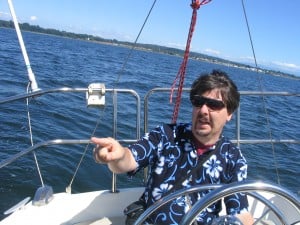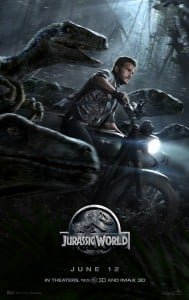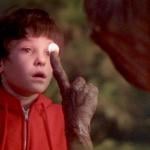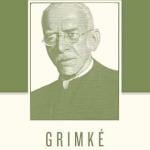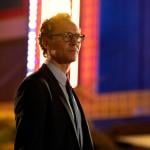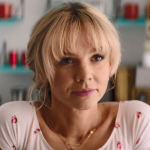Filmmaker Louis Schwartzberg has collected 25 interviews with memorable, remarkable Americans and sewn it together in an array of breathtaking cinematography to inspire us with a vision of dedication, determination, and imagination.
Click here for Jeffrey’s review of America’s Heart and Soul.
Jeffrey Overstreet: First of all, thank you for making this film! I’m hoping it inspires other cinematographers to put together reels of their own favorite footage, their own stories. You’ve given moviegoers a breath of fresh air in a season of stale formulas and tired clichés. You introduce us to so many interesting people in this film that I found myself wishing for a whole series of these films, so you could spend more time with each of them. And at the same time, I want to meet thirty or forty more of the folks you’ve encountered along the way. Have you thought about expanding it into a series?
Louis Schwartzberg:
Oh, man, maybe a sequel would be great. There were a lot of good stories, but I had to hone it down to the themes that were most important. Some of the stories were similar thematically. I had to pick the ones that would fit the mosaic of the film we were trying to put together. For the DVD, we’ve added longer musical performances for the stories that are about musicians, like the rock band and the dairy farmer, the salsa dancing, the klezmer guy. We put in whole musical performances.
JO: I found my attention a bit divided. I was focusing on the people, but also on the cinematography. It was a little distracting to keep wondering, “How in the world did he get that shot?” Some of them looked like they must have been extremely difficult shoots. LS:
The cliff dancers’ shoot was extremely challenging-putting a crane on the top of a cliff so you can shoot straight down. The aerobatic flyer Patty Wagstaff-that was certainly very challenging. She’s doing eight Gs of gravity with a mounted camera. The bike messenger… I love all of those shots that are visceral. We’re coming out against Spider-Man 2 and people should certainly enjoy seeing films like Spider-Man because it’s got a lot of great visual thrills, but it’s kind of a popcorn movie. My movie’s got the visual thrills and more of a nutritional value to it. What I try to do is make a real-life movie experience. Some people might think that documentaries are kind of boring and grainy and doesn’t have a lot of production value. I tried to make a movie that’s as good as any quote-unquote Hollywood feature, but we used real people instead of Hollywood actors.
JO: There are so many different styles of cinematography, especially with the increasing use of digital cameras and handheld cameras. You’re a professional with a specific kind of footage. What do you think of the current trends in cinematography? Is there anything you’d like to see less of? Or more of?
LS:
I guess I’m not into the shaky, gritty, grainy, grungy look. I think quality is important. You were remarking on the cinematography—it’s not there just to be pretty. It makes a greater emotional impact in telling a story. Beauty is a way of having you fall in love with your subject matter. It’s an emotional connection. It’s not intellectual. Beauty makes you fall in love with nature, so hopefully you’ll protect it. Beauty makes you fall in love with your baby so you won’t throw it out with the bathwater when it cries. I’m fascinated with beauty, and that’s what I try to capture with my moviemaking.
JO: If you could talk with yourself as a younger cinematographer, what have you learned that you wish you could have known at the beginning?
LS:
I had the greatest teacher in the world—Mother Nature. Everything from lighting to composition, texture, balance, I learned it all from her, and I’m still learning it. So I would encourage anyone who’s interested in photography or cinematography to learn from the best.
JO: Do you use digital cameras?
LS:
I don’t. I bought one recently for snapshots when I’m traveling. But I love shooting film. I know the medium. It’s like an old craft… like oil painting. I just know what film can do. Digital’s getting better and better all the time, but there’s something about it that feels too electronic to me. I just love the colors and palette of film. When I shoot film, I can actually feel the light etching into the emulsion. That to me is like an ancient craft. Chasing the light… everytime I look outside and I see a gorgeous shaft of light or a gorgeous sunset, I want to have my camera and I want to capture that. That’s my approach to stories, so that’s what I’m going to do for now. I’m still learning how to do it. I don’t want to throw away 30 years of experience on just getting a handle on it.
JO: When you’re filming landscapes or light, are you collecting stock footage that others will use in other projects?
LS:
It’s more about creating a visual vocabulary for me to use down the road in one of my own project. I’ve also created a stock library, but I didn’t do that as a business. I did that to help pay for this expensive habit I have called making movies. And paying for the overhead, paying for the salaries of my employees. So if I’m able generate some money by licensing shots for other films, that’s great, but for me it’s about having a vocabulary. Because you can’t just create a production schedule and say -“Today I’m going to go out and shoot a rainbow or a stormcloud or lightning or a clear day over L.A.” All of that is very risky. When nature provides those magic moments, I’m going to capture them and somehow, some way, sometime down the road I know it will fit into a show I want to do.
JO: Do you have a particular favorite memory of a magic moment that thrills you every time you see it?
LS:
There are a lot of them in America’s Heart and Soul. The fog rolling in over the Golden Gate bridge. I’m on the very top of it. You can see the fog half-covering the bridge below you. That’s a great show. The aerials of Chicago… to get a clear morning in Chicago is a real miracle. Rainbows—I’ve shot a lot of rainbows. To have the cameras threaded and ready to roll, you have to say, “Is that serendipity? Or it that just being lucky? Or is that being opportunistic?” I guess that depends on your philosophy of life.
JO: Speaking of “a philosophy of life,” you have so many dream chasers in your film. You’ve found so many people who are not living to win the lottery or to get to the top. They’re just doing what they love. What sets them apart? Where do you think these callings come from?
LS:
I hope that everyone has a strong calling inside of them. It’s a matter of finding that connection. There are probably a lot of barriers or distractions or impediments to discovering your soul. Once you discover it, you’ll end up finding happiness for yourself. You’ll end up making a living as a byproduct of that. Ben Cohen has that great line in my movie, where he talks about how with ice cream, you feel like you do a great job by filling a need. You make money as a byproduct of filling that need. I’ve been lucky enough in my life to find that passion, which has been filmmaking and creating imagery. Luckily, I’ve been able to make a living doing that. I think that if that becomes your focus, you’ll end up being happy. And more than being happy, you’ll end up helping other people. Hopefully we can all find that connection within ourselves.
JO: It’s been distressing to see so much press devoted to America’s Heart and Soul as if it’s some kind of competition for Fahrenheit 9/11, as if it was something that was quickly cooked up to provide an argument.
LS:
Yeah. Fifteen years ago! [laughing]
JO: Is that frustrating to you?
LS:
It’s been a rollercoaster ride. My film was made years ago, and the release of the Michael Moore film happened just before mine. It’s unfortunate that there’s a cloud of controversy around that because my film is not political. It’s good that Michael Moore went out and made a film that expresses his political convictions. It’s something he’s passionate about. Hopefully it creates a lot of debate among audiences regarding whether you agree with him or don’t agree with him. Freedom of speech has to be our most prized right in this country. We all need to support that. It’s actually an interesting one-two punch because he’s taking a critical look at our country. My film basically takes a look at the values and ideals that this country was founded on by looking at these 25 ordinary but remarkable people across America. It doesn’t preach who to vote for or how to live your life, but hopefully it provides inspiration, that may help you decide what direction you want your country to go in. Mark Twain had a great quote that the definition of a patriot is someone who loves their country and isn’t afraid to criticize their government. The two movies are totally different subject matters. Mine’s about ordinary people who go to work every day and who raise their kids and help their community. Whether you agree or disagree with our current administration, these individuals don’t have a lot in common with those guys. They don’t fly in private 747s. They don’t make multimillion dollar deals. They’re not involved in waging war. They don’t have a lot in common.
JO: It was a breath of fresh air to focus on something inspiring, something in which people are actually building something instead of destroying something.
LS:
I’m an optimist. Look at the guys in my film… the steel workers, or the barbershop who says, “I don’t know what the answer is, but the answer isn’t about quitting.” That’s where I’m coming from. That’s the kind of spirit we have in this country. We can re-build. We can re-shape. We can redefine those freedoms. Vote. Get involved in this process. If you don’t, you’ll lose those freedoms. I’m looking at people who have a little mileage under their belts, who have lived lives, who hopefully have some wisdom from their experiences.
JO: What about movies… and moviegoers…would you like to see change?
LS:|
I’d like to change the cycle of the chicken and the egg. The studios think, “This is what audiences want.” And maybe that’s because that’s the message we’ve sent them. Actually look at the documentary Super-size Me. If you had a choice between fast food and home cooking, what would you take? Maybe just because they’re making a lot of money in the fast food industry makes them think that there’s not an audience for something of quality. That’s the struggle with my movies. They go, “How do you market a film that’s hand-crafted, quality film, no celebrities, quote-unquote documentary, how do you get audiences to fill the seats?” I hope audiences come out strongly and support the movie and any other independent movie on opening day, because opening day determines whether it’ll stay in the theater and whether films like this will be made in the future. It’s an ongoing cycle. And in order to influence that you have to prove to the bean counters that independent films can make money. That’s actually one of the things I learned from going across this country—that people in the media look down their nose at people in Middle America. But those people are really smart, and they know that they don’t want their culture homogenized by the mass media-what to eat, what to drink, what kind of music to listen to, people want to maintain their culture and they’re pretty savvy about that.
JO: Before we wrap this up, will you give us something like a DVD extra? If you could have added one more story to the film, what would it have been?
LS:
Here’s a great story about Jesse White. He’s got a group called the Jesse White tumblers. He’s an African American in Chicago, and he helps young kids in the ghetto feel good about themselves and they travel around the world doing gymnastics. He gives a tremendous amount of energy to young kids, and he teaches them tough love. Get your hands out of your pockets. Stand up straight. Do your studies, as well as get involved in gymnastics. He teaches them how to be strong individuals. That’s a really inspiring story, but the reason why we didn’t use it was that we also had the story about Michael Bennett in Chicago, who also was doing a similar thing with helping young kids get off the streets, teaching them how to box, teaching them about the right values in life. So, those are the tough choices I have to make. Here are two stories that were similar. I wanted to have a lot of diversity in the movie, and I wanted to keep it moving. I had to make a choice between one and the other.
JO: I wish you the best on opening day. I think America’s Heart and Soul is going to be one of those treasures that spreads, word of mouth, so that when it arrives on DVD it’ll already have become meaningful to a large audience.
LS:
This’ll be interesting to me personally just as a view of the zeitgeist of this country. I think the film at this point-there’s not a lot I can do, it has to stand on it’s own merits. If people really embrace this movie because of its spirit and the values that it reflects back to the people, then I’ve got a lot of hope for where we’re going.


